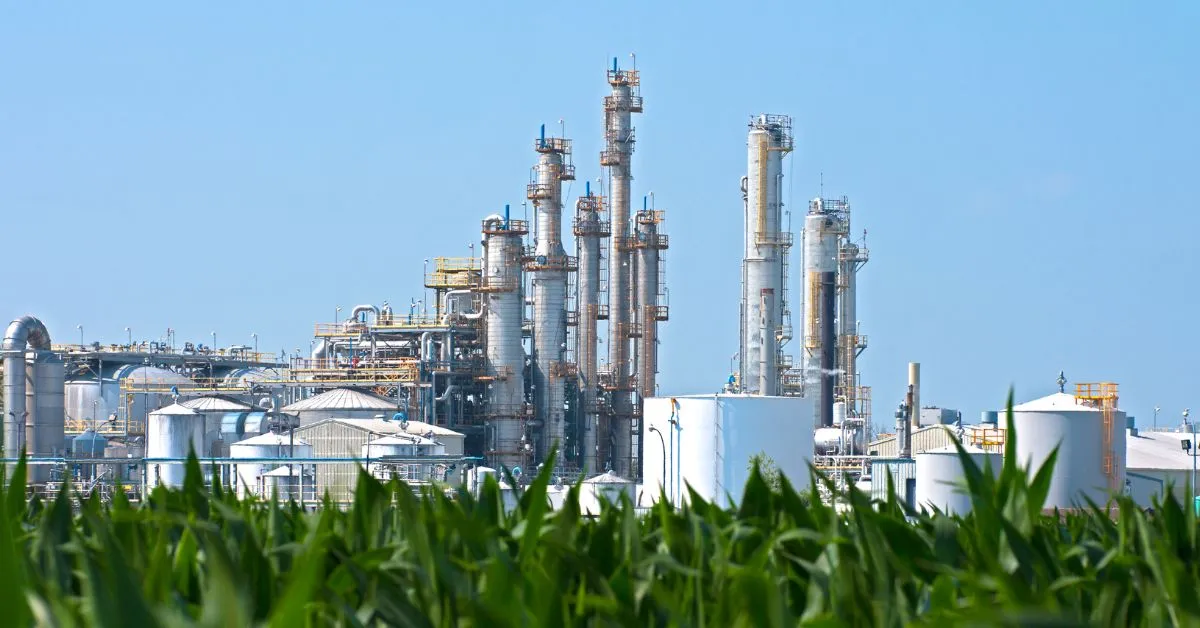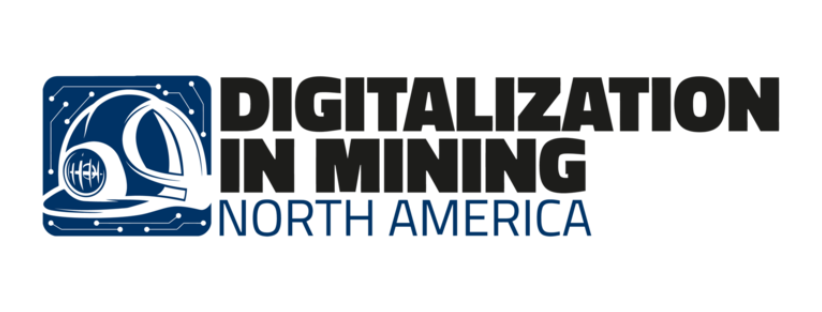The demand for sustainable fuels is expected to triple over the next 20 years, according to McKinsey. This surging growth creates unprecedented opportunity, but it also intensifies the squeeze on ethanol producers caught between promise and pressure: tighter margins from volatile input costs, unpredictable feedstock quality, and increasingly complex operational demands that increase the costs of ethanol production.
Recent market challenges tell the story. Feedstock price volatility and supply chain disruptions have created significant hurdles for producers. Simultaneously, producers face mounting requirements to slash carbon intensity scores, yet retrofitting energy-hungry distillation units requires capital investments that become increasingly difficult to justify under fluctuating policy regimes.
While ethanol producers navigate these headwinds, other process industries have discovered a powerful solution through industrial AI. This data-driven approach—Closed Loop AI Optimization—has matured for ethanol production, delivering higher yields, reduced energy consumption, and streamlined operations without the years-long wait for new hardware installations or capital projects.
The Challenge: Complex, Variable, Data-Rich and Under-Optimized
If you run an ethanol plant, you already juggle a moving target of feedstock availability and quality. One season’s corn arrives clean and starch-rich. The next brings drought-stressed kernels laced with mycotoxins and priced at a premium because European harvests falter and imports stall. Every shift begins with the same question: how do you keep yield steady when the raw material keeps changing?
That volatility is amplified by the sheer energy appetite of distillation columns. Heat and electricity can account for a significant portion of operating expenses, though feedstock costs are typically the largest share, while regulators and buyers track carbon intensity scores with increasing scrutiny. Retrofitting boilers or adding carbon-capture pipelines sounds good on paper, but capital budgets and permitting timelines rarely cooperate.
Then there’s the operational complexity. You navigate certification requirements, multi-feedstock logistics, and policy swings that can shift margin calculations overnight. Each decision—when to pull from a higher-fiber waste stream, how far to push fermenter temperature, whether to throttle back steam—is entangled with dozens of other variables.
The irony is that most plants already collect the data needed to tame this complexity. Historians log values of thousands of tags every minute, yet those numbers often sit idle because traditional optimization tools can’t cope with ethanol’s nonlinear reactions or the hours-long lag between lab sample results and control moves. Front-line operations default to conservative setpoints, leaving yield, energy, and profit on the table.
How AI Solves It: From Reactive Control to Real-Time Optimization
AIO solutions transform plant data into real-time action through a self-learning, feedback-driven approach. Instead of waiting for lab results or relying on fixed rules, the system learns from years of historical operations, identifies hidden relationships among hundreds of variables, and continuously updates its understanding of how your plant behaves.
The system operates through four integrated components:
- Historical data mining: It analyzes years of operational data to uncover complex relationships between feedstock quality, fermentation health, energy inputs, and final yield.
- Soft sensor development: It builds real-time estimators for key variables such as ethanol concentration, reducing reliance on delayed lab results.
- Real-time optimization: AIO goes beyond what digital twins alone can do. It uses reinforcement learning and continuous feedback to autonomously adjust process parameters like temperature, pH, and distillation energy in real time. This enables higher yield and lower cost without human intervention.
This end-to-end optimization loop removes the need for constant manual tuning. While traditional advanced process control often struggles with variability, AIO continues learning. As new data streams in, the models retrain, the AI model refines, and performance continues to improve automatically.
Key Applications in Ethanol Plants
Boosting Yield and Fermentation Consistency
Your fermenters face constant change—corn quality shifts, side-stream sugars appear unexpectedly, and lab results trail real conditions by hours. An AIO solution turns that uncertainty into steady control. By learning from historical runs, the system continuously adjusts pH, temperature, nutrient feed, and retention time, keeping yeast in its most productive state minute by minute. Soft sensors infer sugar and ethanol concentrations long before lab data arrives, so you react in real time, not after the fact.
When feedstock quality drops, AI automatically extends retention or increases nutrient dosage to maintain conversion. Research on ML-guided promoter tuning shows that AI strains can lift ethanol yield by up to 63% under optimal conditions, even during heat stress, with additional studies confirming similar optimization potential. Plants report shorter fermentation cycles with equal or better conversion, freeing capacity without new vessels.
Cutting Energy Use in Distillation
Distillation burns through a third of your plant’s natural gas budget, yet product purity leaves little room for error. A Closed Loop AI Optimization solution constantly balances steam flow, reflux ratios, and column pressure against purity targets, finding the operating point that cuts fuel while meeting spec. Because the AI model can test hundreds of scenarios per hour, it spots opportunities to lower reboiler duty when feed alcohol is strong or ambient temperatures drop.
Similar industrial AI deployments have achieved energy savings, which directly benefit the bottom line and reduce carbon intensity scores. The same algorithms weigh throughput against utility cost, so you can push higher production on cheap-energy days or throttle back when gas prices spike, without manual retuning. The result is a steadier, leaner column that quietly cuts both operating costs and emissions every shift.
Reducing Downtime and Process Variability
Unplanned outages and shift-to-shift swings steal profit faster than any single inefficiency. An AIO solution watches thousands of signals simultaneously, flagging subtle drifts in heat balance, feed viscosity, or column pressure long before alarms trip. When performance veers off course, the system adjusts setpoints to steer you back, eliminating the subjective decisions that vary between crews.
Tech Behind the Scenes: What Makes It Work
The AIO solution functions like a digital twin, creating a dynamic virtual model of your plant that mirrors its behavior in real time. This living replica continuously processes historian and lab data, running scenarios before implementing any changes on the actual system.
What sets this apart is continuous learning. While some digital twins might provide a simulation environment, the AIO solution adapts to your plant’s actual behavior, capturing nonlinear relationships that confound conventional controls and understanding how changes in one area affect downstream processes.
Machine learning algorithms discover cause-and-effect patterns invisible to operators. Bio-ethanol research utilizing AI and machine learning approaches has achieved promising prediction accuracies, significantly reducing feedback loops.
Reinforcement learning explores millions of control combinations to maximize yield or minimize energy use. Validated recommendations flow through secure channels to your DCS for implementation.
User-friendly dashboards explain decisions in plain language, showing which variables drove each recommendation. The platform integrates with existing systems on lightweight servers, continuously improving performance without extensive IT investment.
Results Ethanol Producers Can Expect
When you put an AIO solution in charge of day-to-day decisions, improvements quickly impact your balance sheet. By reducing variability, you minimize quality giveaway and avoid unplanned shutdowns, delivering payback in months.
Yield gains come primarily from optimized fermentation. The AI continuously adjusts critical parameters, pushing conversion toward theoretical limits while bridging the lab-to-control gap.
Energy efficiency improves as the system maintains precise vapor-liquid balance for required purity while minimizing steam demand. Similar deployments in refining consistently achieve double-digit fuel reductions, decreasing both costs and carbon intensity.
Final Thoughts: Ethanol Needs to Think Bigger About Optimization
Closed Loop AI Optimization (AIO) has moved beyond experimental pilots in process industries—ethanol producers can now access the same proven technology that’s delivered double-digit gains in throughput and cost reduction across manufacturing sectors. The opportunity is clear: higher yields from variable feedstock, lower energy costs in distillation, and steadier operations when corn quality shifts or market conditions tighten. Early adopters will grow profits faster while their teams gain modern tools that turn decades of process data into real-time action.
For ethanol plants ready to move from reactive control to autonomous optimization, the Imubit Industrial AI Platform delivers a plant-specific Closed Loop AI Optimization solution. Schedule a complimentary assessment with Imubit to see how much untapped value is waiting inside your system.




